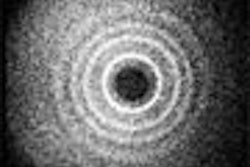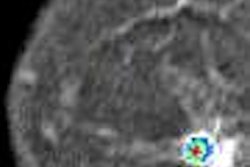In 2003 a group from the University of Nevada School of Medicine in Las Vegas declared that a routine postoperative upper gastrointestinal (UGI) imaging series was not beneficial after gastric bypass surgery as it had a low positive predictive value for leaks (Obesity Surgery, February 2003, Vol. 13:1, pp. 73-75). Now a group from the Cleveland Center for Bariatric Surgery in Ohio is challenging that notion, pointing out that a UGI series is a useful tool for potential surgical modifications.
"In an effort to reduce hospital costs, some surgeons have abandoned routine UGI testing," wrote Dr. Aviv Ben-Meir in a poster presentation at last week's American Society for Bariatric Surgery (ASBS) meeting in San Francisco. "Use of this test, however, may allow for the detection of potentially avoidable complications."
For this retrospective study, Ben-Meir and colleagues reviewed 976 laparoscopic Roux-en-Y gastric bypasses performed by a single surgeon between July 2002 and October 2005. They noted any abnormal UGI test results and subsequent changes in patient management.
Of the 976 patients, 3.2% had abnormal UGI results, although no leaks were identified radiographically or clinically. Fifteen of the patients were treated for asymptomatic distended bypassed stomachs. In nine patients, poor emptying of contrast from the pouch was shown on UGI imaging so that diet initiation was delayed until a repeat UGI test indicated normal emptying. Thirteen were discharged after negative UGI results.
Two symptomatic patients were treated with tube gastrostomy. The authors described one of these patients in which the UGI test changed the management strategy. A pre-UGI scout film revealed a gastric ileus (distended bypass stomach) of 6 cm. Repeat film six and a half hours later showed increased gastric distension to 9 cm. The patient complained of hiccups and left shoulder pain, but there was no evidence of tachycardia. A gastrostomy tube was placed under CT guidance. Both the hiccups and the left shoulder pain stopped, the authors stated.
They concluded that performing UGI imaging gave surgeons the right information to modify postoperative regimens in these patients. Without the results of the imaging test, the patients may have been readmitted to the hospital with more serious conditions such as a leak at the gastrojejunostomy or bypassed stomach staple line.
In a related article, Dr. Laura R. Carucci and colleagues from Virginia Commonwealth University in Richmond evaluated the UGI features of extraluminal leak after gastric bypass surgery. In their study of 906 patients, UGI revealed 50 extraluminal leaks and death after extraluminal leak occurred in 6% of those patients.
The group stressed that "early detection of postoperative leak is critical for minimizing morbidity and preventing mortality.... Clinical symptoms are often nonspecific, and physical examination is difficult owing to the large size of the patient; therefore, routine early postoperative upper GI examinations are advocated for the detection of leaks" (Radiology, January 2006, Vol. 238:1, pp. 119-127).
By Shalmali Pal
AuntMinnie.com staff writer
July 5, 2006
Related Reading
Obesity gets in the way of good images, December 2, 2004
Imaging helps detect and treat bariatric surgery complications, December 2, 2003
Gastric bypass battles bulge, but patients pose imaging challenge, December 27, 2003
Copyright © 2006 AuntMinnie.com



















